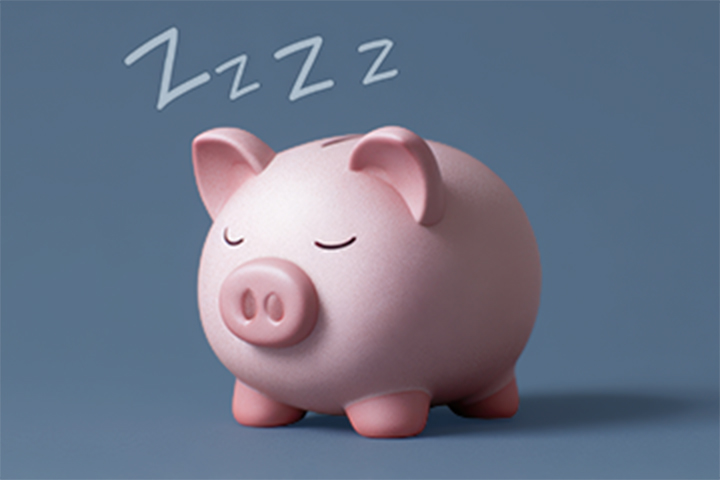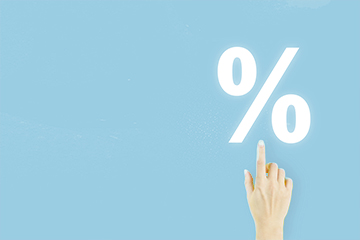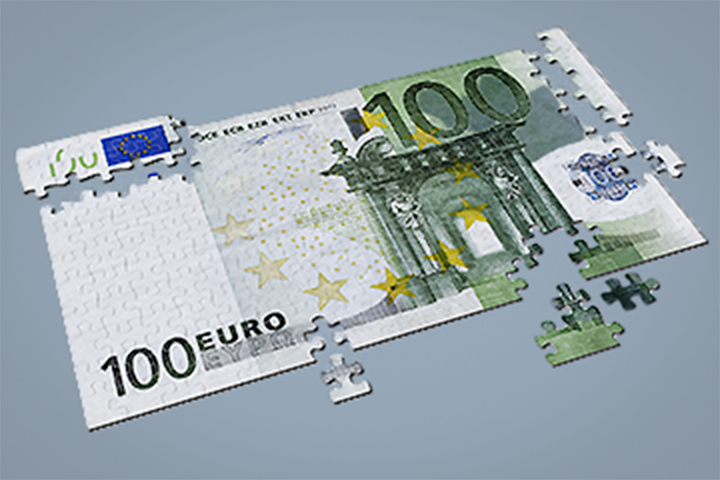Guide: how much you need in savings

Keytrade Bank
keytradebank.be
August 14, 2025
(updated August 25, 2025)
3 minutes to read
1,000, 10,000, 100,000 or a million perhaps? How much do you need in savings to deal with any unexpected expenses and live your life with peace of mind?
Together, Belgian households have 370 billion euro in their current and savings accounts according to the latest figures from the National Bank of Belgium (July 2024). On average, this means 39,223 euro for every adult in Belgium. Not bad, you might think. But averages sometimes hide outliers. That definitely applies to Belgian savers, too. The median – the point at which half has more and half has less – is far lower. According to the latest study in 2022, the median is 14,000 euro in savings per household (not per person!). Is 14,000 euro enough for a family to ensure financial security? Or perhaps 39,223 euros per person is more than you need? The answer depends on several factors. There is no hard line. You can't say a buffer of 19,999 euro is insufficient, but at 20,000 you suddenly have enough.
To calculate what is sufficient for your personal situation, you need to categorise your savings for emergencies, savings for projects and savings for the future.
1. The foundation: a savings buffer for emergencies
Your savings buffer is your financial lifeline designed to protect you against unexpected expenses and loss of income. Your washing machine might break, you may have a medical emergency or you could suddenly lose your income. Such an emergency fund will help you overcome setbacks without having to give up your normal lifestyle or get into debt.
A substantial emergency savings buffer tends to contain three to six months of your family’s net income. That figure is based on the idea of you being able to keep on paying your fixed expenses should you temporarily lose your income. For someone with a monthly net income of 2,500 euro, this would mean an emergency fund of between 7,500 and 15,000 euro.
These three to six months are a rule of thumb. However, not everyone needs the same buffer. For a customised approach, you can calculate your emergency buffer on this Dutch site in less than a minute. The exact amount in your emergency savings account depends on several factors:
- Household composition: Single people with no kids and couples with a double income and no kids tend to need a lower buffer than families with children. Single parents in particular benefit from maintaining a larger buffer, given they have greater responsibilities and a higher risk of unexpected costs.
- Work situation: If you have a fixed income, a smaller buffer may be sufficient. But if you are a freelancer or have an irregular income, a larger buffer is crucial. The same applies if you work in an industry with less job security.
- Age and health: As you get older, your healthcare costs tend to go up, so it makes sense to increase your buffer if you are getting older.
- Peace of mind: Also listen to your gut feeling. If you sleep better at night with a higher amount in your savings account, then that’s totally fine.
- Home ownership: You may need a larger buffer if you own your home, especially if it has not yet been fully paid off. Repair and maintenance costs can mount quickly.
- Debt: If you have one or more car loans, this increases your monthly fixed expenses and may therefore warrant a larger buffer. This also applies to other loans, such as a mortgage or personal loan. Significant monthly commitments mean that you need a larger buffer to absorb any unexpected setbacks without jeopardising your financial stability.
- Economic situation: A challenging economic environment may push up your spending and reduce your financial buffer more quickly. In times like these, it makes sense to maintain a larger buffer to be prepared for rising expenses or falling income.
It is best to keep your money for emergencies in a separate savings account. This keeps your emergency savings fund out of your sight so that you’re less likely to be tempted to spend it on other things. If you think you will have to use some of this buffer within the year, it is best to opt for a savings account with a higher basic interest rate.

2. On top of the savings buffer: saving for projects
In addition to a buffer for unexpected expenses, it is also a good idea to set aside a fund for future projects, like a renovation, a big trip, or a new electric bicycle. This fund can also be used to cover more expensive months (the start of the school year, the festive season in December, etc.), to pay your road tax and car insurance and so on. How much you set aside for this depends on the projects you are planning and what they cost. A renovation can cost tens of thousands of euro, while you may only need a few thousand euro for a holiday or a new bike. It may be useful to keep a separate account for such purposes. You can also keep an overview by organising your savings for very large and expensive projects in several accounts. If you will be saving for a certain project for more than a year, a savings account with a higher loyalty premium is certainly worth considering.
3. Saving for the future
It may also be a good idea to set aside some money for your pension already. The income from your statutory pension is unlikely to be sufficient to maintain the same standard of living unless perhaps you worked as a public official your entire career. Civil servants get an average gross pension of 3,381 euro per month. According to the latest Pensionstat figures, retired employees get an average gross pension of 1,615 euro and previously self-employed persons get 1,156 euro. There is a huge gap between men and women. Women’s pensions are on average 23% lower in Belgium. Besides a savings account with a higher loyalty premium, a deposit account with a longer termis also an option. Keeping your money in a term deposit account for a fixed period gives you a guaranteed interest rate. This can be attractive, because the interest on term deposits is often higher than that on ordinary savings accounts. Is your retirement still a long way off and are you prepared to take a little more risk? Then you could consider investing as an additional option. Investing offers a higher potential return in the long term. If you don't have much experience with investments, you can start off with just a small amount (for example, 25 euro each month) to familiarise yourself with the stock exchange.
Monthly savings: how much should we save and how should we do it?
Four in ten Belgians struggle to set money aside every month. Building a sufficiently large savings buffer may seem daunting, but with the right approach, it can be achievable.
A general rule of thumb is to save 10% of your net income each month. This means that someone with a net income of 2,500 euro should save 250 euro every month. If 10% of your income is not achievable, don't be discouraged. Saving is not a race, and every euro you can set aside is a step in the right direction. Try to choose an amount that suits your budget.
You can try different methods to save more. For example, you can set up an automatic transfer to your savings account on the day your income is paid into your current account. This makes saving a habit and you don't have to think about it every month. Automation sets the money side before you are tempted to spend it.
You can also save more by examining your spending patterns. Make a budget and identify where you can cut costs. Perhaps you can stop some subscriptions you no longer use or save energy by being more aware of your consumption. Small adjustments can make a big difference in the long run.


